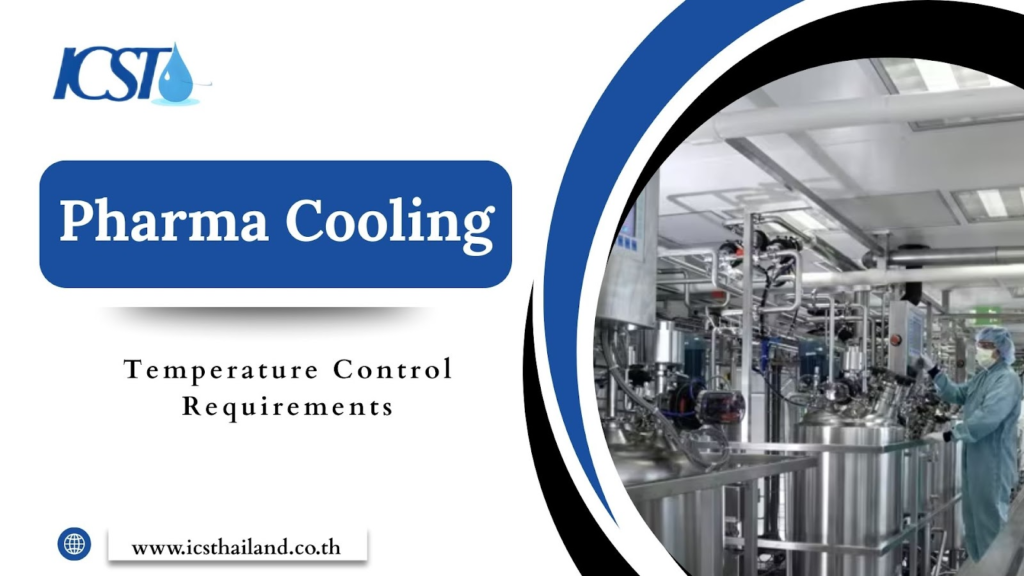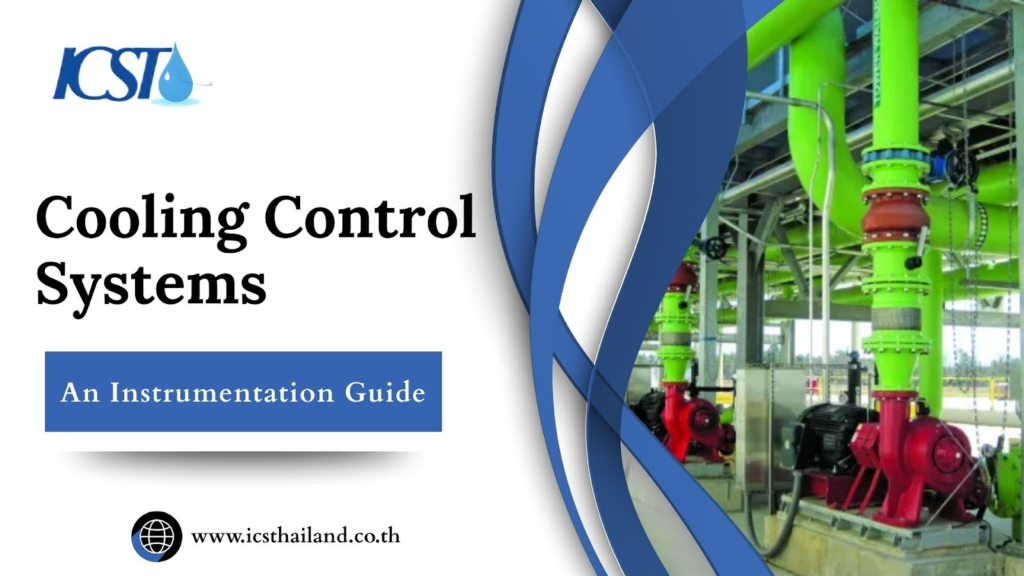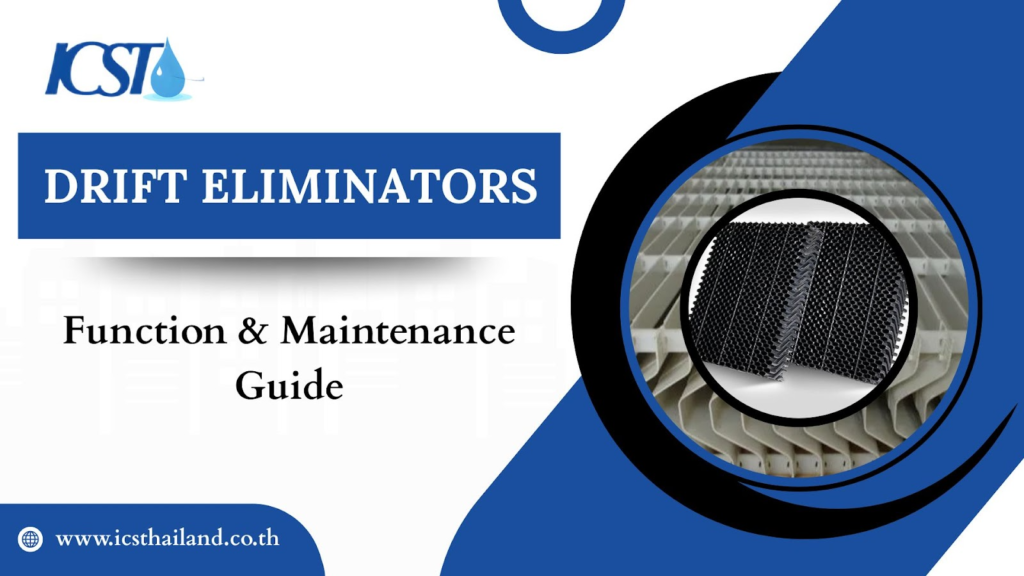Industrial cooling systems work around the clock to maintain optimal temperatures, but they come with a hefty price tag.
The challenge is substantial. Industrial cooling systems often consume between 40% and 60% of a facility’s overall energy usage. When these systems operate inefficiently, they don’t just drain budgets; they increase carbon footprints and compromise operational reliability.
Energy efficiency offers a powerful solution. By implementing strategic improvements, facilities can achieve 20-30% reductions in cooling energy costs while enhancing system reliability and meeting environmental compliance standards. These improvements also extend equipment lifespan and reduce maintenance requirements.
We’ll explore techniques, technologies, and best practices designed to help you transform your cooling systems from energy-intensive drains into models of efficiency. Whether you’re looking for quick wins or long-term solutions, this industrial cooling energy efficiency guide has you covered.
Table of Contents
ToggleUnderstanding Where Energy Goes in Industrial Cooling
Industrial cooling systems consume energy through multiple components, each presenting unique optimization opportunities. Identifying the biggest energy consumers helps prioritize improvement efforts.
Key Energy-Consuming Components:
- Compressors: These powerhouses typically consume 60-70% of system energy, making them the primary target for efficiency improvements
- Pumps: Circulating chilled water and condenser water throughout facilities, pumps can account for 15-20% of cooling energy use
- Fans: Essential for air movement in cooling towers and condensers, fans represent 10-15% of total consumption
- Auxiliary Equipment: Variable frequency drives, controls, and monitoring systems add another 5-10% to energy usage
Critical Factors Affecting Energy Performance:
- System Design and Age: Older systems often lack modern efficiency features and may be oversized for current needs
- Load Fluctuations: Most cooling systems operate less efficiently at partial loads, yet facilities rarely run at full capacity
- Environmental Conditions: Ambient temperature, humidity, and seasonal variations dramatically impact system performance
- Refrigerant Selection: Modern refrigerants can improve compressor efficiency while reducing environmental impact
Every 1% improvement in cooling efficiency can translate to thousands of dollars in annual savings for large facilities.
Core Strategies for Improving Industrial Cooling Energy Efficiency
Proactive Maintenance: The Foundation of Efficiency
Proper maintenance isn’t just about preventing breakdowns; it’s about preserving peak energy performance. Well-maintained systems consistently outperform neglected ones by 20-30%.
What maintenance tasks deliver the biggest efficiency gains?
- Heat Transfer Surface Cleaning: Clean coils, condensers, and evaporators to maintain optimal heat transfer rates. Even thin layers of dirt or scale can reduce efficiency by 5-15%
- Leak Detection and Repair: Refrigerant leaks force compressors to work harder while water leaks waste pumping energy and treatment chemicals
- Precision Lubrication: Ensuring motors, pumps, and compressors are properly lubricated helps minimize friction and increase the lifespan of the equipment
Water Treatment Excellence
Cooling towers require specialized attention to maintain efficiency. Poor water quality creates multiple efficiency problems:
- Scaling: Mineral deposits act as insulators, reducing heat transfer and forcing systems to work harder
- Corrosion: Corroded surfaces create rough textures that impede flow and heat transfer
- Biological Growth: Algae and bacteria form insulating layers while clogging passages
Professional water treatment programs maintain optimal conditions while minimizing chemical usage.
Strategic System Design and Modernization
Modern cooling technology offers substantial efficiency improvements over systems installed even 5-10 years ago. Strategic upgrades target the highest-impact components first.
Right-Sizing for Real-World Conditions
Many industrial cooling systems suffer from oversizing—a common design mistake that seems safer but actually wastes energy. Oversized systems:
- Cycle on and off frequently, operating inefficiently at partial loads
- Use more energy than necessary during normal operation
- Cost more to purchase and maintain
Accurate load calculations based on actual operational data ensure optimal sizing for both current and projected needs.
Variable Frequency Drive Implementation
VFDs represent one of the most cost-effective efficiency upgrades available. These devices adjust motor speed to match real-time demand rather than running at constant speed.
VFD benefits include:
- Pump Applications: 30-50% energy savings on variable-flow systems
- Fan Applications: 20-40% savings when air flow requirements vary
- Compressor Applications: Improved efficiency across varying load conditions
High-Efficiency Component Upgrades
Modern equipment incorporates advanced designs and materials that deliver superior efficiency:
- Premium Efficiency Motors: IE3 and IE4 motors reduce electrical losses by 2-8% compared to standard motors
- Advanced Chillers: New refrigeration technology and improved heat exchangers boost coefficient of performance (COP)
- Optimized Cooling Towers: Enhanced fill designs and fan configurations improve heat rejection while reducing energy use
Heat Recovery Integration
Industrial cooling systems generate substantial waste heat that can be captured and reused, significantly improving industrial cooling energy efficiency.
- Space Heating: Waste heat warms buildings during cold weather
- Process Heating: Hot water or steam supports other industrial processes
- Domestic Hot Water: Facilities reduce water heating costs year-round
Well-designed heat recovery systems can improve overall plant energy efficiency by 10-25%.
Advanced Control and Monitoring Solutions
Smart control systems transform cooling operations from reactive to proactive, continuously optimizing performance based on real-time conditions.
Integrated Building Management Systems
Modern BMS platforms provide centralized control and monitoring of entire cooling infrastructures. These systems enable:
- Coordinated Equipment Operation: Multiple chillers, pumps, and cooling towers work together for optimal efficiency
- Automated Responses: Systems adapt to new conditions automatically, without the need for human input
- Performance Tracking: Continuous monitoring identifies efficiency opportunities and maintenance needs
Real-Time Analytics and Sensor Networks
Advanced sensor technology provides unprecedented visibility into system performance. Key measurements include:
- Temperature and Pressure: Monitor refrigeration cycles and identify inefficiencies
- Flow Rates: Ensure proper circulation throughout the system
- Power Consumption: Track energy use by individual components
- Water Quality: Maintain optimal conditions in cooling towers and chilled water loops
Analytics software processes this data to identify trends, predict maintenance needs, and recommend operational improvements.
Dynamic Setpoint Optimization
Smart controls adjust setpoints based on:
- Process Requirements: Match cooling output to actual production demands
- Ambient Conditions: Take advantage of cooler outdoor temperatures
- Utility Rate Structures: Shift cooling loads to lower-cost time periods when possible
Intelligent Equipment Sequencing
Facilities with multiple cooling units achieve maximum efficiency through smart sequencing strategies:
- Lead-Lag Operation: Rotate equipment to equalize operating hours and wear
- Efficiency-Based Loading: Operate the most efficient units first
- Optimal Load Distribution: Run equipment at peak efficiency points when possible
Predictive Fault Detection
Advanced diagnostic systems identify potential problems before they impact efficiency or cause failures. These systems monitor:
- Performance Deviations: Detect gradual efficiency losses that indicate developing problems
- Vibration Patterns: Identify bearing wear and alignment issues in rotating equipment
- Energy Consumption Trends: Spot increasing energy use that signals maintenance needs
Early detection prevents small problems from becoming major efficiency losses.
Measuring Success and Maximizing Returns
Successful energy efficiency projects deliver measurable results that extend far beyond reduced utility bills. The most effective improvements provide:
Immediate Cost Savings
- Reduced electricity costs from lower energy consumption
- Decreased maintenance expenses from improved equipment reliability
Long-term Strategic Benefits
- Enhanced system reliability and reduced downtime risk
- Improved regulatory compliance and environmental performance
- Increased facility capacity without expanding cooling infrastructure
- Enhanced property value and competitive positioning
Environmental Impact
- Significant reduction in carbon footprint
- Decreased water consumption and waste
- Elimination of ozone-depleting refrigerants
- Contribution to corporate sustainability goals
Conclusion
Improving industrial cooling systems offers significant energy savings, enhanced reliability, and better environmental performance. By focusing on proper maintenance, strategic upgrades, and advanced controls, facilities can reduce energy consumption by 20-30% while optimizing operations.
Success comes from treating energy efficiency as an ongoing process, involving continuous monitoring, routine assessments, and incremental improvements to meet evolving needs. Start with a professional energy audit to uncover opportunities, then prioritize actions based on savings potential, costs, and operational impact.
With careful execution, these improvements deliver long-term benefits for your business. Ready to boost your Industrial Cooling Energy Efficiency? Explore ICST today and see the difference we can make!
Frequently Asked Questions
How much energy do industrial cooling systems use?
Industrial cooling systems often consume 40-60% of a facility’s total energy, making them a major operational expense.
How does maintenance boost cooling efficiency?
Proactive maintenance, like cleaning and leak repair, preserves peak energy performance. Well-maintained systems can be 20-30% more efficient than neglected ones.
How do advanced controls improve cooling efficiency?
Advanced controls (like BMS) optimize performance by coordinating equipment, automating responses, and dynamically adjusting setpoints, ensuring continuous peak efficiency.
What are the main benefits of better cooling efficiency?
Key benefits include reduced electricity, maintenance, and water/chemical costs, plus enhanced system reliability, less downtime, and a significant reduction in carbon footprint.
How can I find cooling energy savings?
Start with a professional energy audit of your industrial cooling system. This will pinpoint inefficiencies and prioritize actionable strategies based on potential savings and costs.








